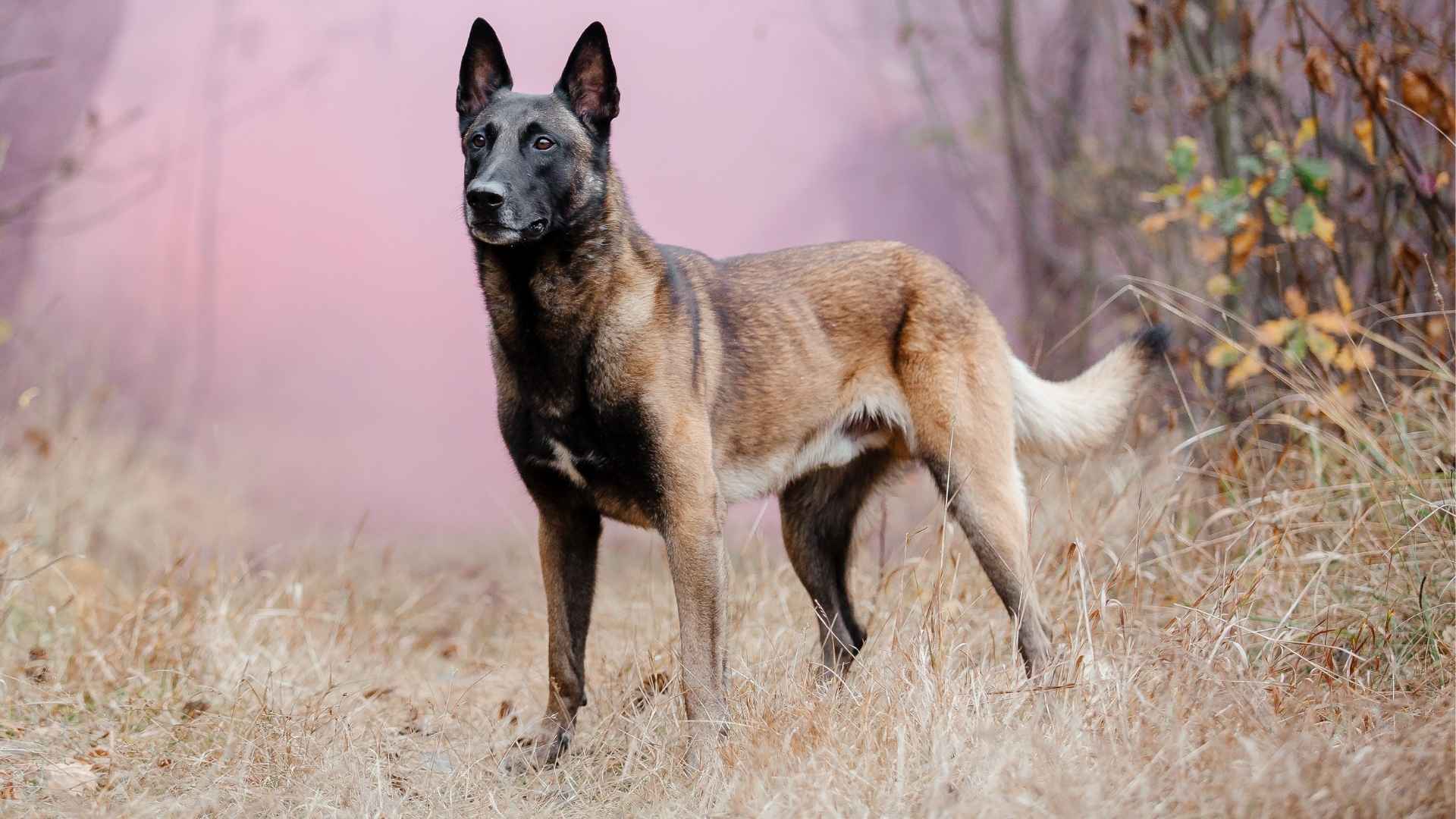Not every guard dog reacts the same way to potential danger. Some bark at every sound or chase anything that moves, while others hold their ground and think before they act. The most trusted guardians are those who stay calm until the moment a real threat appears.
These dogs combine intelligence, self‑control, and loyalty, which means they can patrol, protect, and warn without unnecessary aggression. For families, farms, or security work, that balance matters—it allows a dog to be both a trusted companion and a reliable protector.
The seven breeds on this list have been shaped by centuries of work as livestock guardians, estate protectors, and service animals. They are steady under pressure, alert but not overreactive, and, with the right training, they’ll only attack when truly needed.
Guard Dog Breeds That Attack Only When Truly Threatened
1. German Shepherd

The German Shepherd’s reputation as a guard dog started over a century ago, when they were bred in Germany for herding and protection work. Their mix of power and quick thinking led them into roles with police and military units around the world. They’ve been relied on ever since to stay calm under pressure.
What sets them apart is their ability to observe before reacting. A German Shepherd will often stand still, ears forward, and study a situation before deciding what to do. That pause is what makes them trustworthy in tense moments.

They’re highly responsive to people. These dogs read tone, posture, and even small gestures from their handler, adjusting their behavior almost instantly. This sensitivity is what allows them to remain steady rather than trigger‑happy.
Training is most effective when it’s structured and consistent. Britannica states that German Shepherds love to work, but they need to know what’s expected of them, or they’ll start inventing their own rules. That structure keeps them sharp and fair‑minded.
Because they’re so intelligent, they can pick up bad habits as quickly as good ones. Keeping their training varied and challenging ensures they stay balanced and avoid becoming reactive.
Training Tips for German Shepherds
Teach “wait” and “hold” drills to build patience before action.
Reward steady behavior, not just protective reactions.
Rotate training locations so they learn to stay calm in unfamiliar places.
2. Boxer
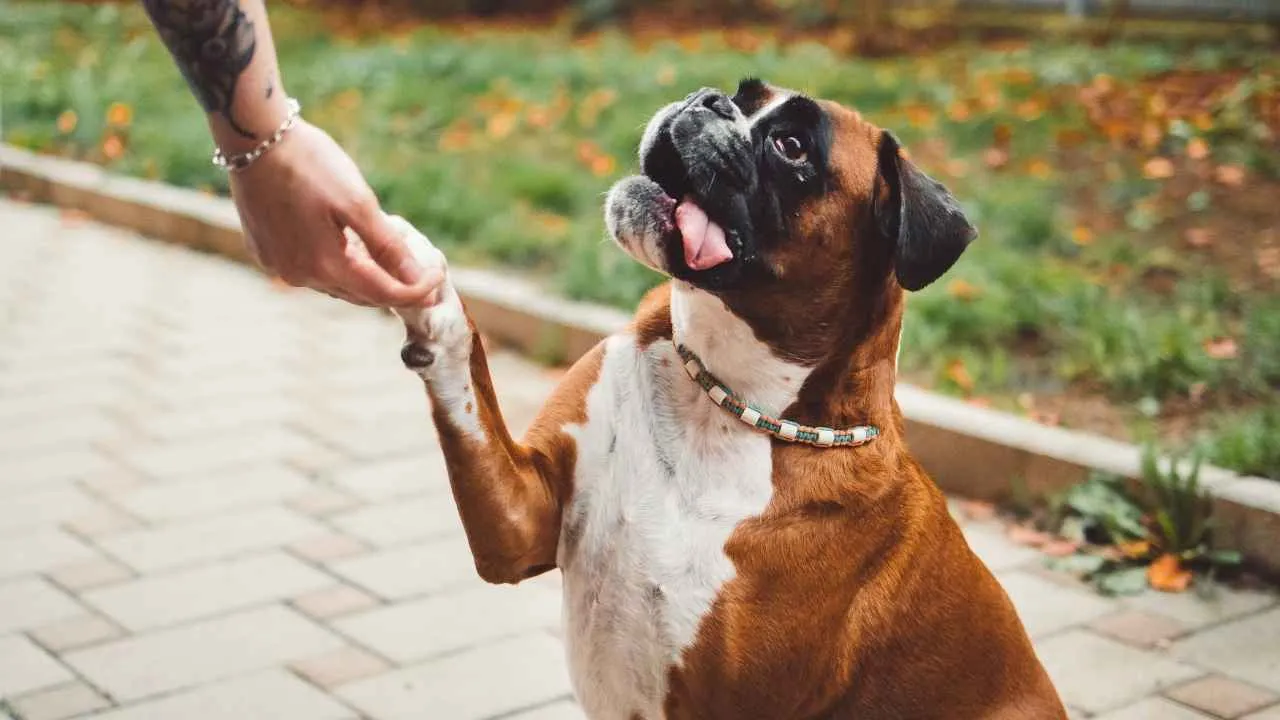
Boxers were developed in Germany from mastiff‑type dogs, with early work in hunting and guarding estates. They kept enough strength to be imposing but were bred for steady temperaments, which is why they’re often patient before reacting. That history shaped a dog that reads situations carefully.
Their energy is the first thing most people notice. A Boxer that’s exercised regularly will be far calmer when something unfamiliar happens, and that balance is what keeps their guarding instinct measured. They can be watchful without becoming anxious.
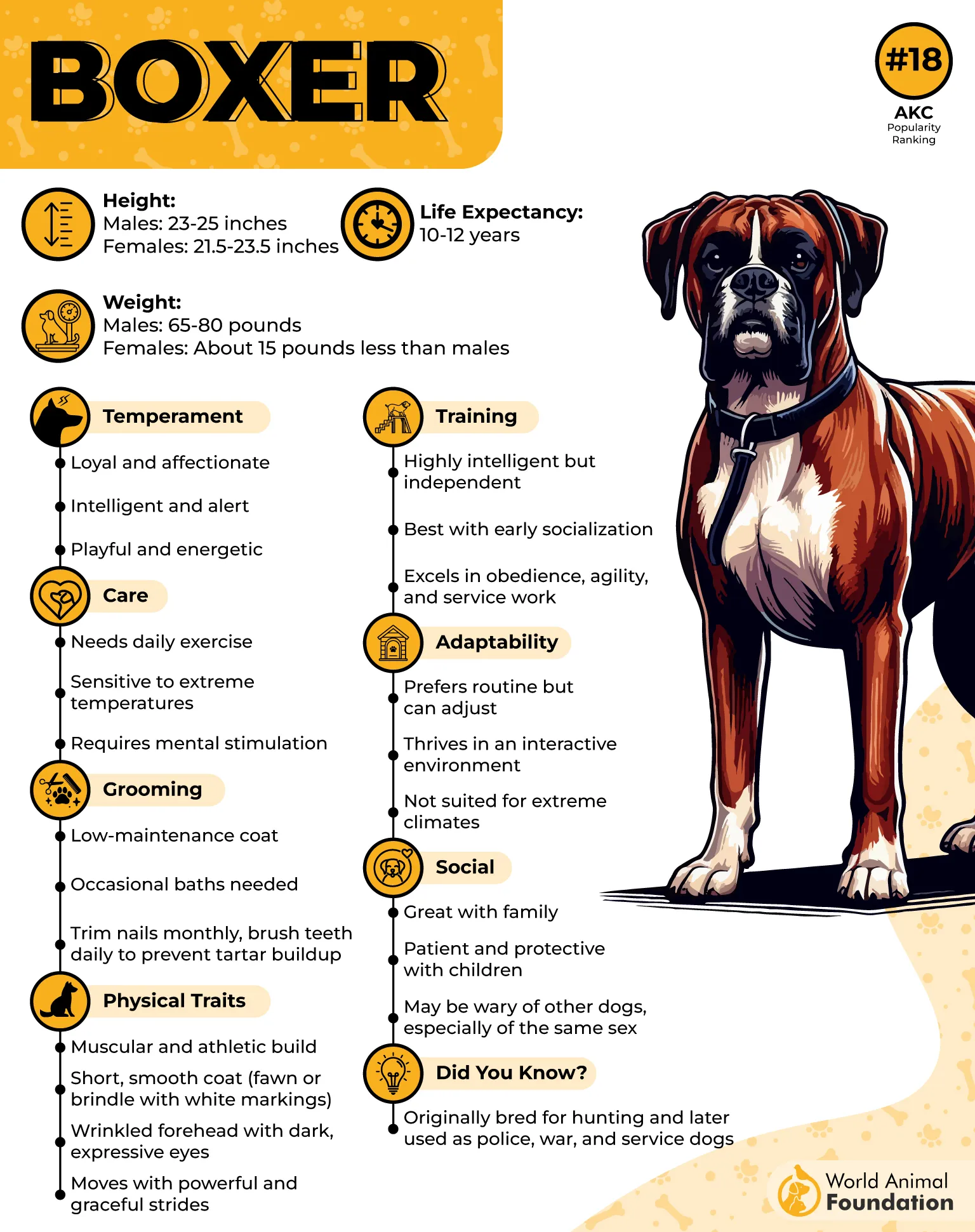
Training is easier when it’s active. Boxers respond well to lessons that feel like games, using their energy to learn self‑control instead of just burning it off. They stay sharp when they have something to do.
Family bonds play a role in how they guard. They form strong attachments to their people, and that loyalty makes them hesitate before reacting to anyone their family trusts. It’s what makes them protective but not reckless.
Boxers are expressive and curious, which can lead to distractions. Structured boundaries help them know when to focus and when to relax, creating a clear “on duty” mindset.
Training Tips for Boxers
Teach “focus” commands to redirect their curiosity when they get distracted.
Use impulse‑control games like “wait” to encourage patience.
Mix short obedience drills with play to hold their attention.
3. Staffordshire Bull Terrier
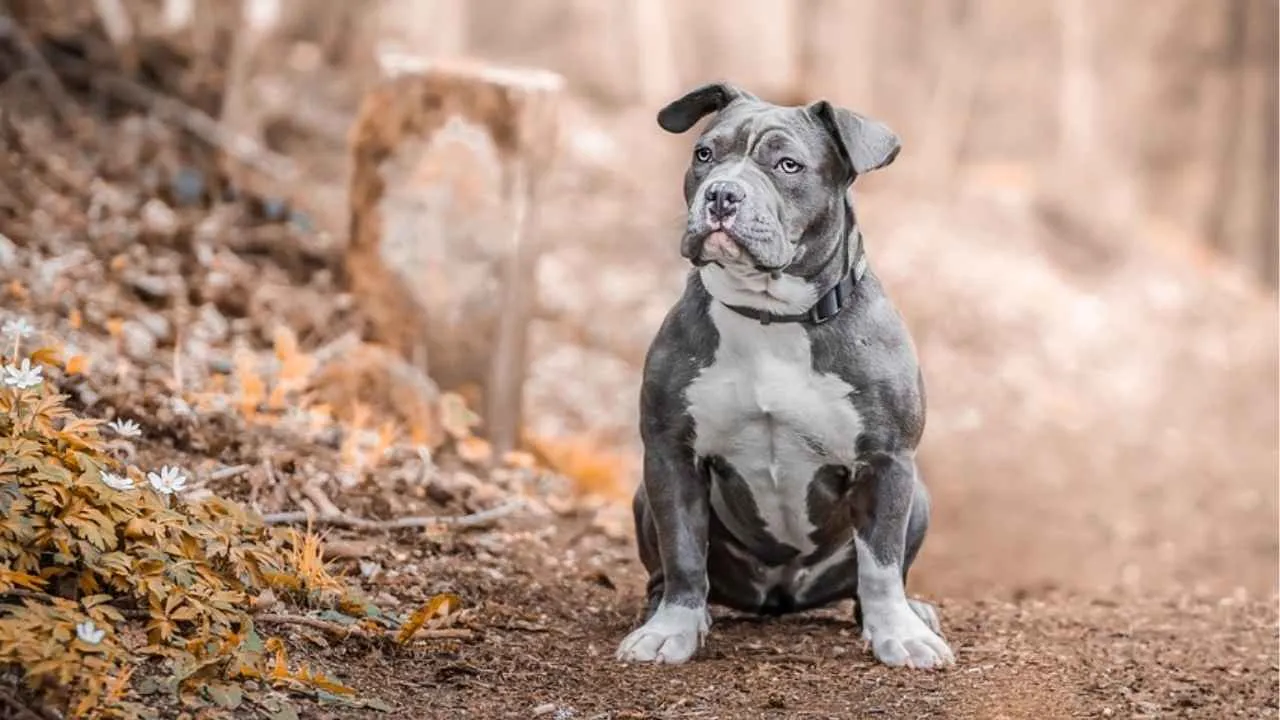
Staffordshire Bull Terriers, often called Staffies, are smaller than most guard dogs but have an unmatched mix of grit and affection. Their compact frame hides how courageous they are, and that bravery doesn’t come with needless aggression.
They’re known for their strong attachment to people. A Staffie tends to look to its owner before reacting, which creates a built‑in pause between sensing something and deciding what to do about it.
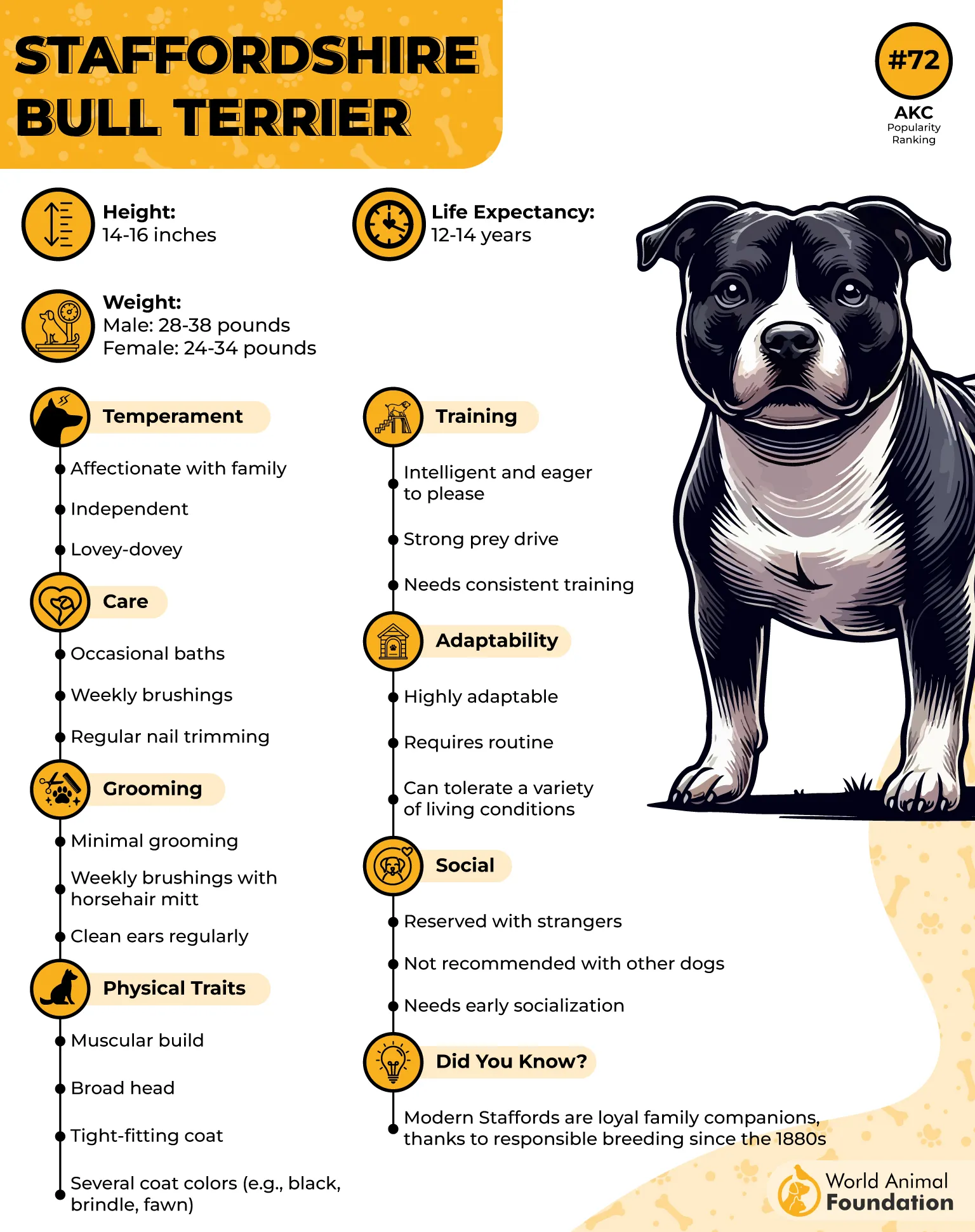
Their energy level is high, but it’s friendly energy. Structured play and work burn off that excess drive and help them think clearly when something unexpected happens.
Because they love people so much, they rely on direction. Handlers who set routines and boundaries end up with a dog that is protective but controlled, one that knows when to stand down.
Their smaller size (24–38 pounds) means they don’t intimidate on bulk alone, but their confidence fills that gap, and they don’t back off easily when there’s a real threat.
Training Tips for Staffordshire Bull Terriers
Use daily drills that mix obedience and impulse control.
Reward calm reactions to new people so they don’t assume every stranger is a problem.
Practice “alert and release” so they can turn off their guarding mode on command.
4. Bullmastiff
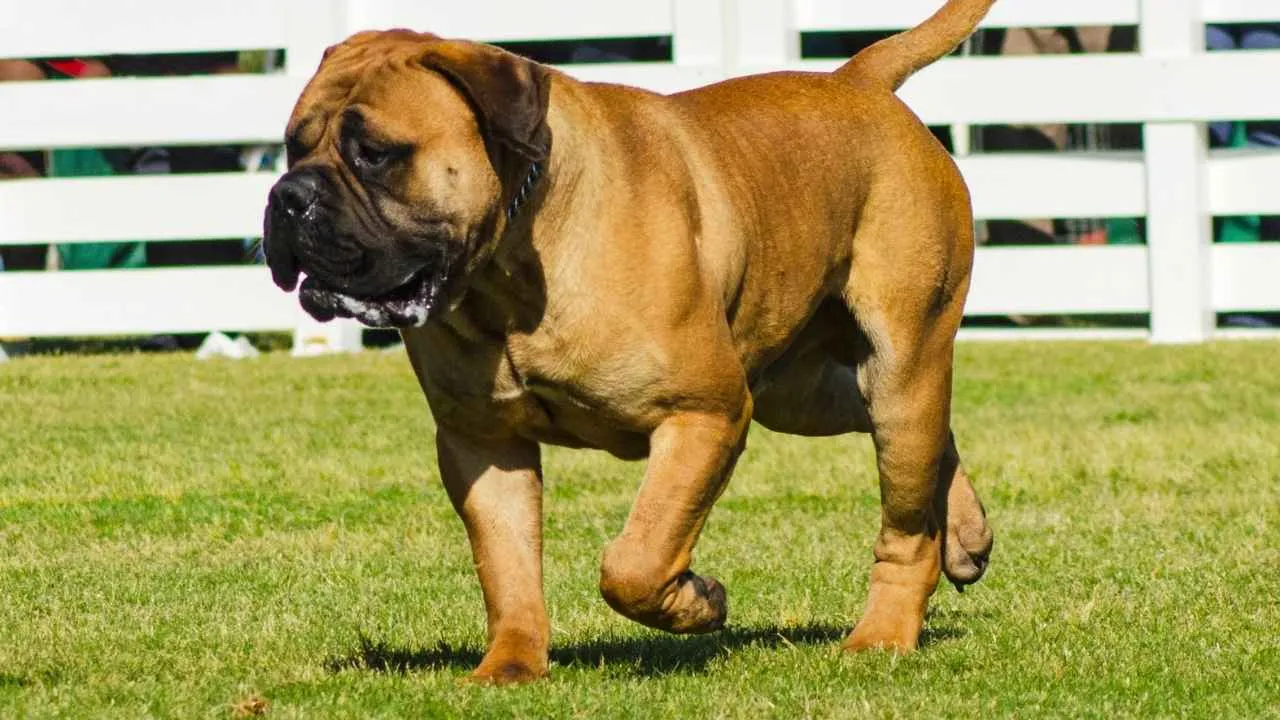
The Bullmastiff was bred in 19th‑century England to guard estates from poachers, which meant gamekeepers needed a dog that could stop intruders without turning every encounter into chaos. That purpose shaped a breed that relies on presence first and strength only when absolutely required.
They aren’t noisy watchdogs. A Bullmastiff won’t fill the air with barking—it prefers to stand still, stare, and make its point silently. Most intruders understand the message without needing a second warning.
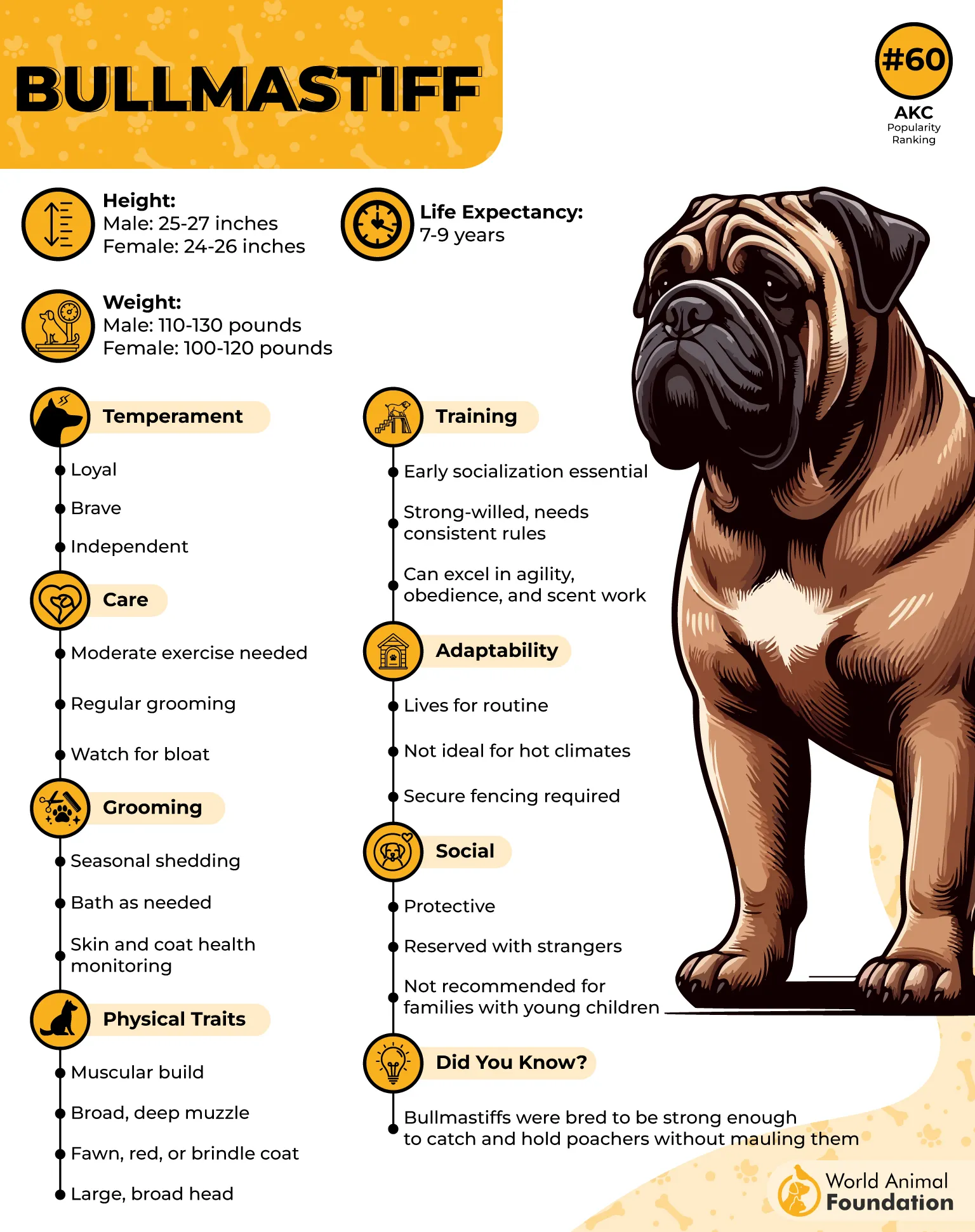
Bullmastiffs read situations slowly and carefully, which is why they are valued as “thinking” guardians. They aren’t prone to darting around or reacting to every flicker of movement, and that control sets them apart from more excitable breeds.
They are naturally confident, but that confidence needs to be shaped with guidance. Early structure helps them understand what’s worth responding to and what isn’t, giving them balance as they grow.
Their sheer size—often over 120 pounds—means they don’t have to do much to deter a stranger, but it also means they need to know exactly when to move and when to hold.
Training Tips for Bullmastiffs
Teach clear “watch” and “stand back” cues—they’ll respond to your calm direction.
Keep training short but consistent—they process better in steady bursts.
Practice leash control early—their size makes early manners non‑negotiable.
5. Belgian Malinois
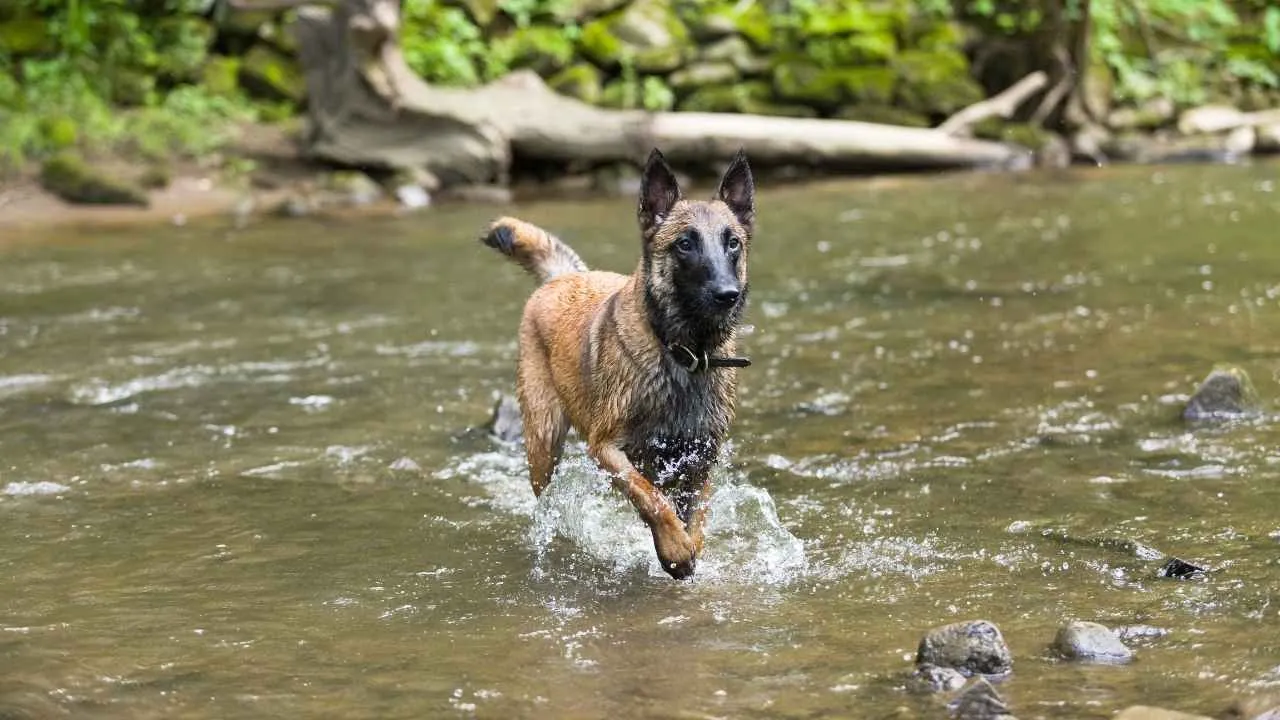
Work is what drives the Belgian Malinois. This breed is built for precision, whether it’s herding, police work, or guarding property, it approaches tasks like a puzzle to solve. That focus makes them excellent guardians who don’t jump into chaos without reading the situation first.
As per WebMD, training isn’t optional; it’s the foundation of how a Malinois lives. They need clear direction and mentally challenging work every day. That sharp mind is a gift when it’s harnessed correctly.
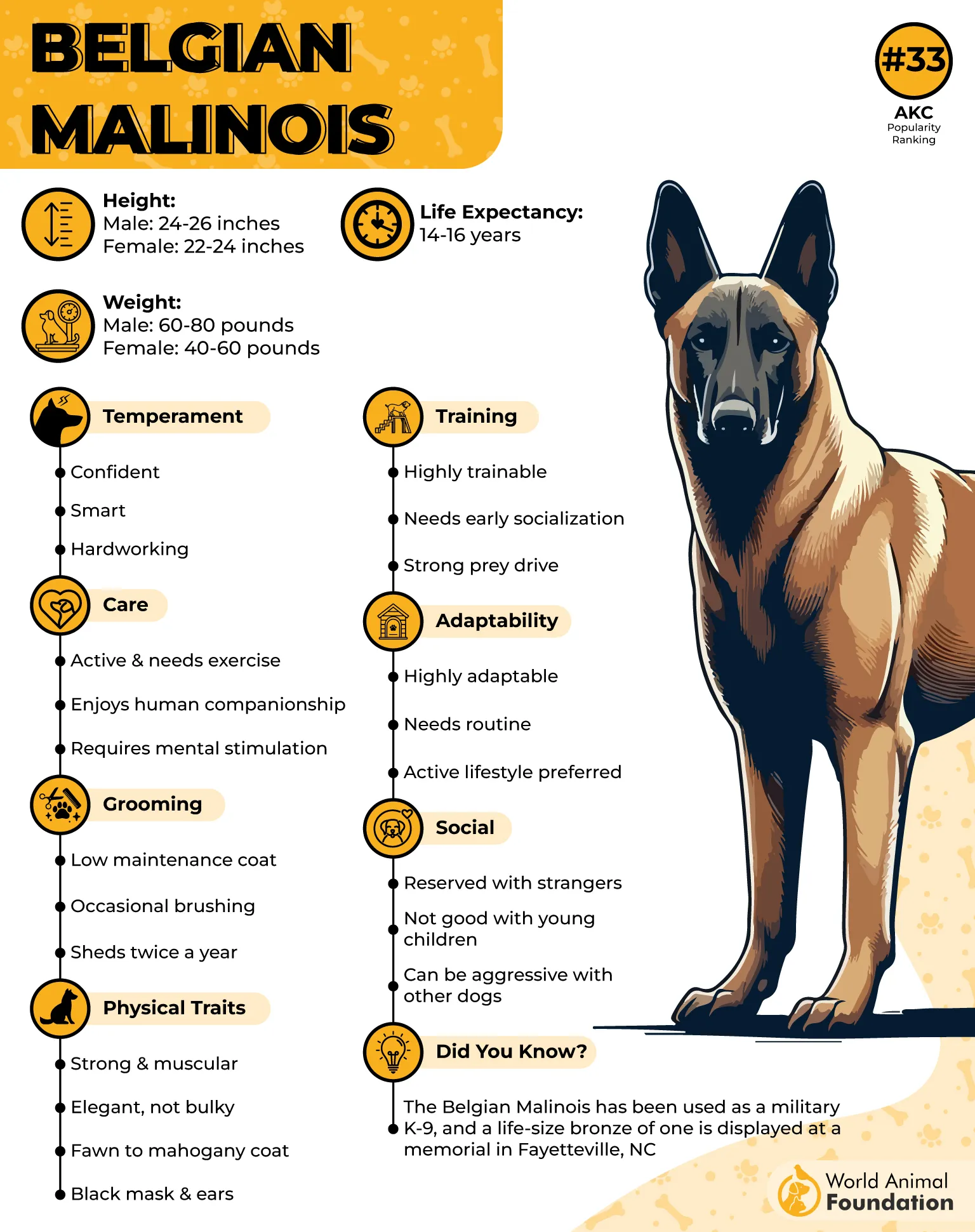
Rather than barking or lunging without thought, Malinois tend to stand still and assess. Their reaction time is lightning fast when necessary, but their instinct is to think before acting.
Their athleticism is unmatched, and they’ll scale fences or cover ground in seconds when something truly crosses a line. That power means they need handlers who can match their discipline.
Because they have endless stamina, they won’t naturally stop themselves—owners must decide when work ends. Without those boundaries, they’ll stay “on duty” all day and all night.
Training Tips for Belgian Malinois
Introduce advanced obedience tasks—they need complex work to stay balanced.
Reinforce “watch” commands so they focus without lunging.
Mix physical drills with mental games—they thrive on variety.
6. Rottweiler
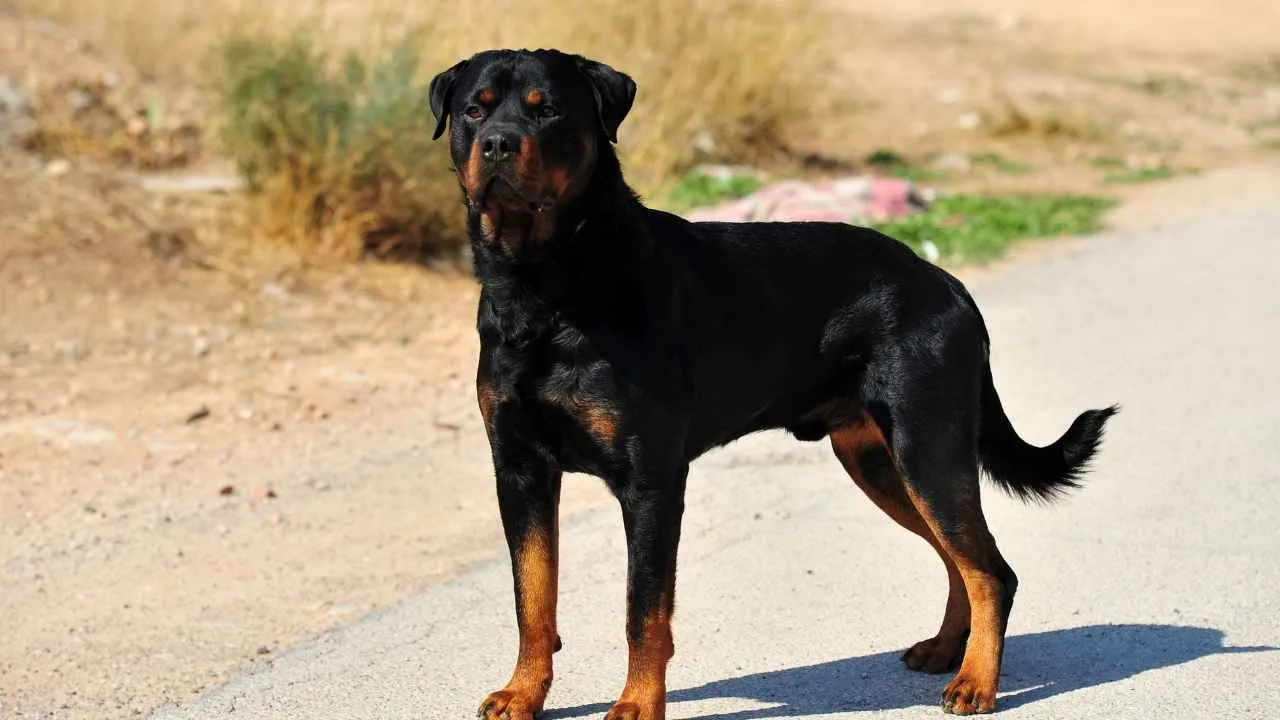
The first thing most people notice about a Rottweiler is its presence. They don’t have to bark or move to send a message—the quiet weight of their stare does the work. That calm authority is what makes them such dependable guardians.
Rottweilers rarely act without reason. Their instinct is to hold ground, assess the situation, and decide whether escalation is needed. That pause is why they’re trusted in both family and security settings.
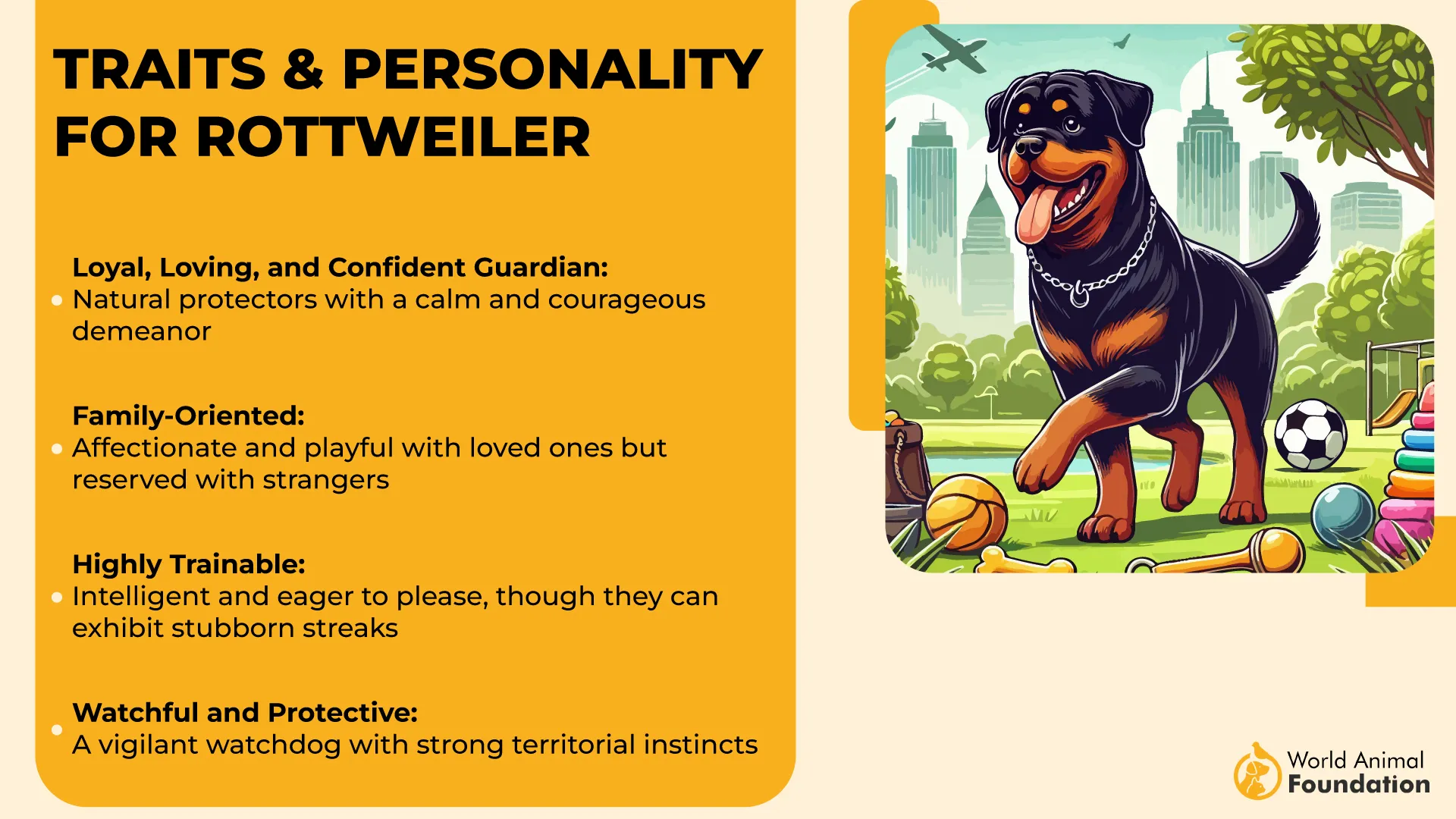
They are deeply loyal to the people they live with, which shapes how they guard. That loyalty gives them the judgment to separate a true threat from a harmless visitor.
Consistency is everything when raising a Rottweiler. They respect strong but calm leadership, and they repay that leadership by staying steady and clear‑headed when things get tense.
They also pick up on their handler’s emotions quickly—nervousness or tension from the owner can make them uneasy. A steady handler creates a steady Rottweiler.
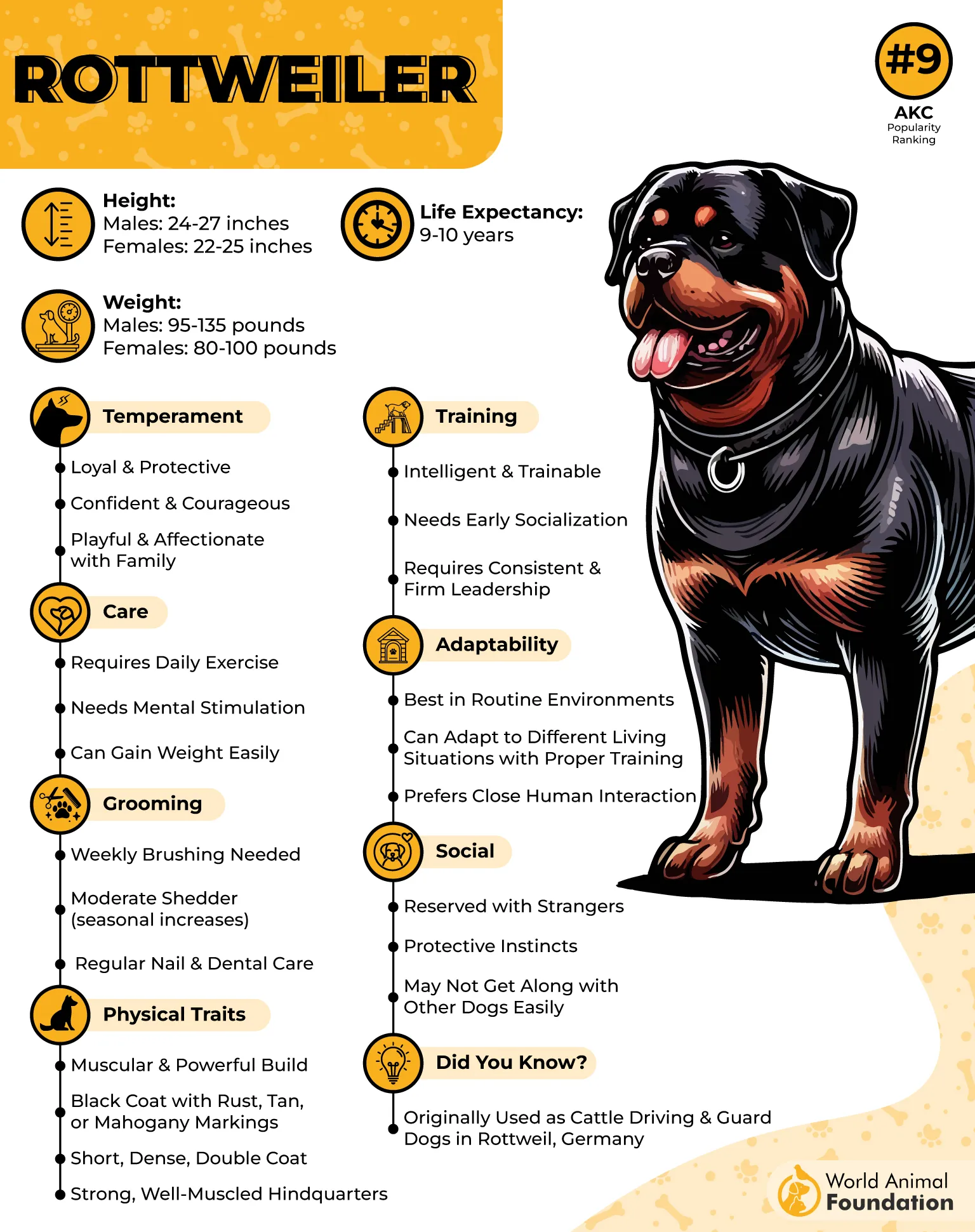
Training Tips for Rottweilers
Use calm, steady commands—they mirror the tone you set.
Teach clear “watch” and “stand down” signals for better control.
Socialize widely when young—they’ll grow into confident, discerning protectors.
7. Cane Corso
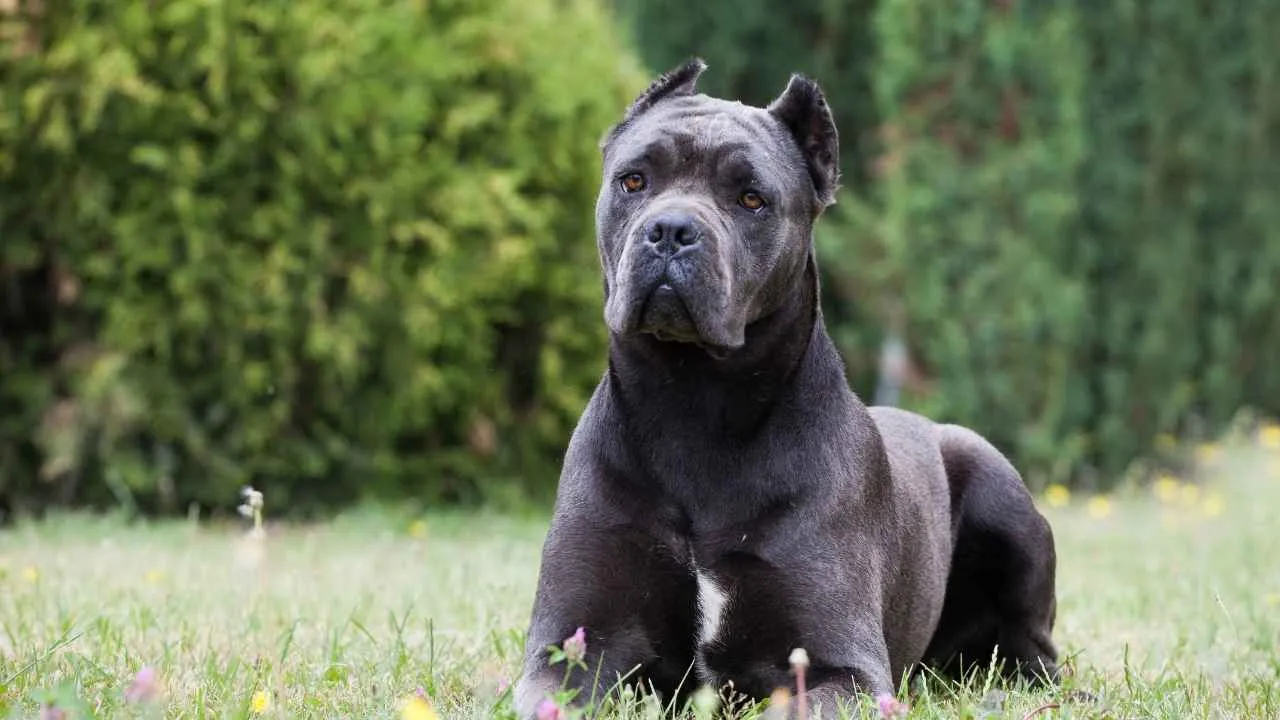
The Cane Corso has an almost statuesque way of guarding. They don’t rush or bark endlessly; they stand still, broad and steady, and let their presence do the talking. For many intruders, that quiet warning is enough to change their minds.
According to the AKC, their roots trace back to ancient Roman war dogs, but the modern Cane Corso has been shaped into a farm and property guardian. Centuries of selective breeding left them with a mix of control and raw strength that can be directed with training.
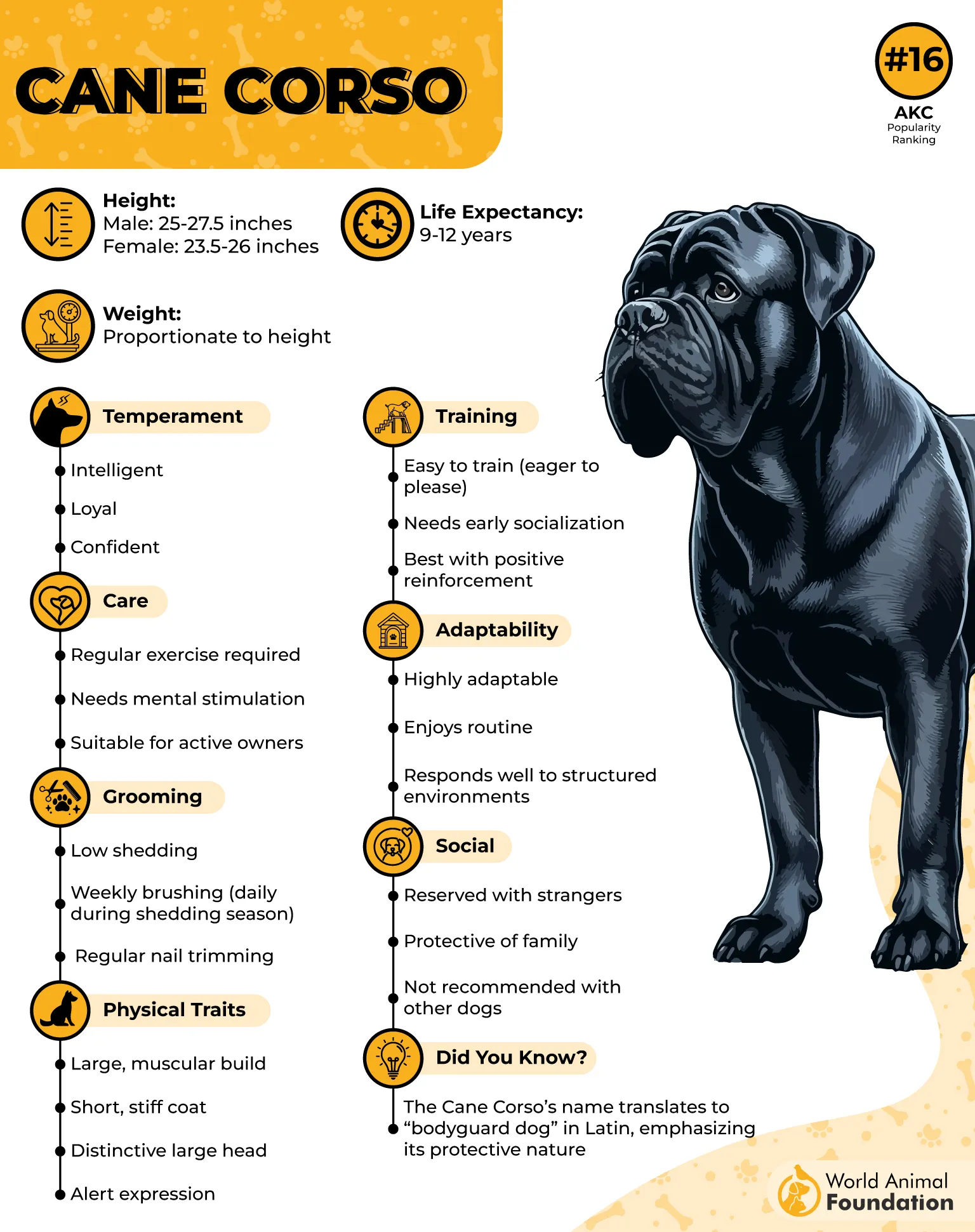
They are tuned in to their surroundings. A Cane Corso notices movement long before most people do, shifting its stance, narrowing its eyes, and silently letting a trespasser know they’ve been seen.
Despite their size, they aren’t naturally chaotic. These dogs tend to hold position until they are certain a response is needed, which makes them measured rather than reactive.
Cane Corsos aren’t pushovers—they need guidance early on to learn what’s normal and what’s a threat. With steady handling, that guidance turns into self‑control, which is their greatest strength.
Training Tips for Cane Corso
Teach “stay” and “watch” cues early—they’ll rely on them instinctively later.
Include controlled exposure to strangers so they learn discernment.
Reinforce calm postures with rewards to strengthen their natural restraint.
Conclusion
Many of the best guard dog breeds share one thing in common: they balance their protective instincts with a calm demeanor that allows them to think before they act. These protection dogs were originally bred to do more than bark—they were created to deter intruders, guard livestock, and stay steady around family members and other pets. For dog owners, this means they can be a great family dog as well as an invaluable asset for safety.
That balance doesn’t happen by chance. Proper training, especially positive‑reinforcement obedience training and early socialization from a young age, helps these breeds channel their strong instincts into measured responses.
Whether it’s a large dog with a loud bark or a furry breed raised among small children, the right guidance turns them from just pets into great guard dogs. With structure, mental stimulation, and a healthy environment, their protective nature becomes exactly what it was meant to be.


